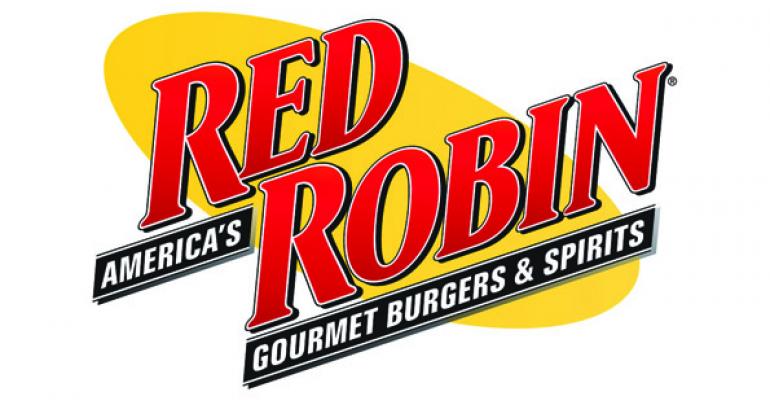Red Robin Gourmet Burgers on Monday reported better-than-expected third-quarter earnings, saying ongoing brand transformation efforts gaining traction.
For the quarter ended Sept. 30, Red Robin reported net income of $3.5 million, or 24 cents per share, compared with $2.1 million, or 14 cents per share, a year ago — a 70-percent increase. However, adjusting for severance and executive transition expenses of $3.7 million last year, earnings per share were about flat at 24 cents.
Revenues rose 3.4 percent to $213.3 million on a same-store-sales increase of 1.1 percent at company-owned restaurants, largely as a result of increases in traffic, the company said. For the year, Red Robin officials predicted same-store sales growth of 0.5 percent.
RELATED
• Red Robin: Tavern Double platform drove 2Q success
• Red Robin CEO looks to the future
• More restaurant industry finance news
Steve Carley, Red Robin’s chief executive officer, touted the success of the chain’s new Tavern Double platform, saying it has been the most successful product launch in Red Robin’s history.
The innovative flavors and “everyday value” of the $6.99 burger line with $1 upgrade options helped boost traffic during a competitive quarter, as did the chain’s new loyalty program, which now has 1.9 million members.
The chain has continued to grow its bar business, which now accounts for 7.2 percent of sales. After hiring a mixologist earlier this year to revamp bar offerings, the debut in September of the Samuel Adams Octoberfest milkshake sparked more public relations impressions in one month than some legacy promotions have in a year, noted Denny Marie Post, Red Robin’s senior vice president and chief marketing officer.
Changes to come
The company is expected to bring in a new advertising partner before the year’s end, which will also lead to some marketing strategy changes next year, Post said.
Red Robin is also testing new menu items — particularly appetizers and desserts — to build sales around the core burger platform, she said. “We are just starting to rock and roll,” she said.
Carley said Red Robin in the fourth quarter will test various investment options for further transformation of restaurants, including changes to the physical space, uniforms, service, menu and food presentation.
Over the next year, the company will use those restaurants as laboratories to see what works best as the brand continues revitalization efforts.
Meanwhile, cost-cutting measures have continued and Carley said no rock would remain unturned to find ways to save without impacting the guest experience.
The company expects to save $120,000 annually by changing the spec for the appearance of onions chopped into salsa, for example. Another $200,000 in annualized savings is expected from a change in to-go meal packaging. And Carley said the company will save $500,000 by switching to washable, reusable kids cups.
At the end of the quarter, there were 331 company owned Red Robin restaurants and 132 franchised locations, as well as five of the chain’s smaller-format, fast-casual Burger Works units.
Carley said the company will continue to growth the Burger Works brand in college campuses, airports, stadiums and other urban locations. Five more are expected to open next year.
Contact Lisa Jennings at [email protected].
Follow her on Twitter: @livetodineout





